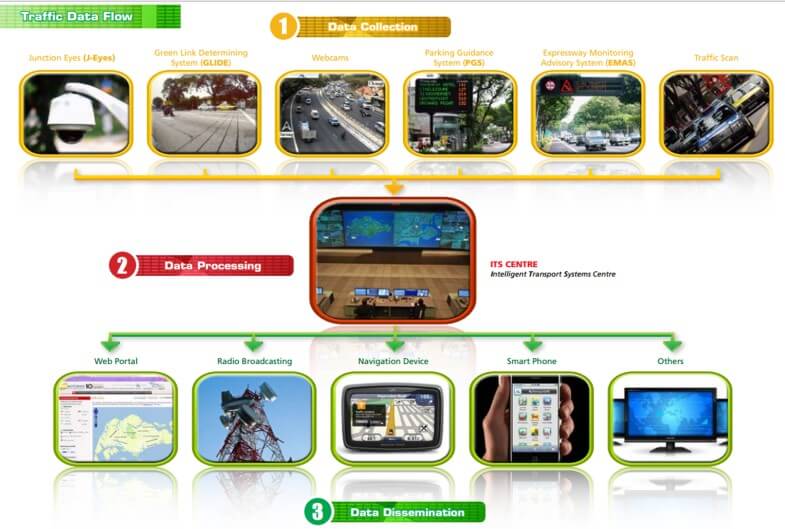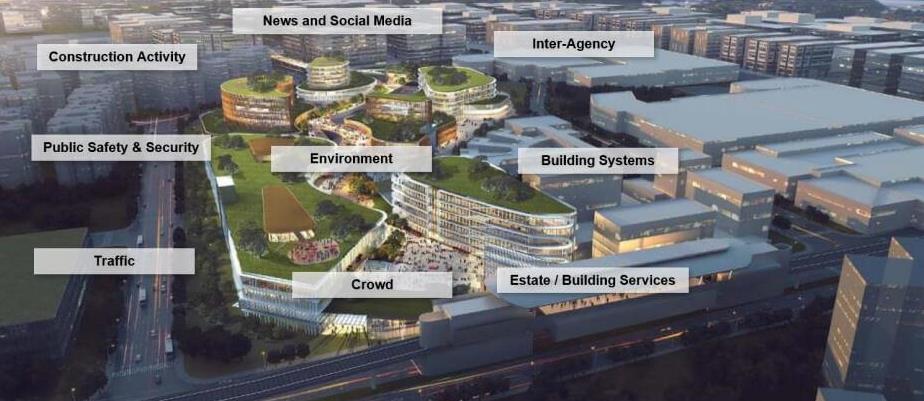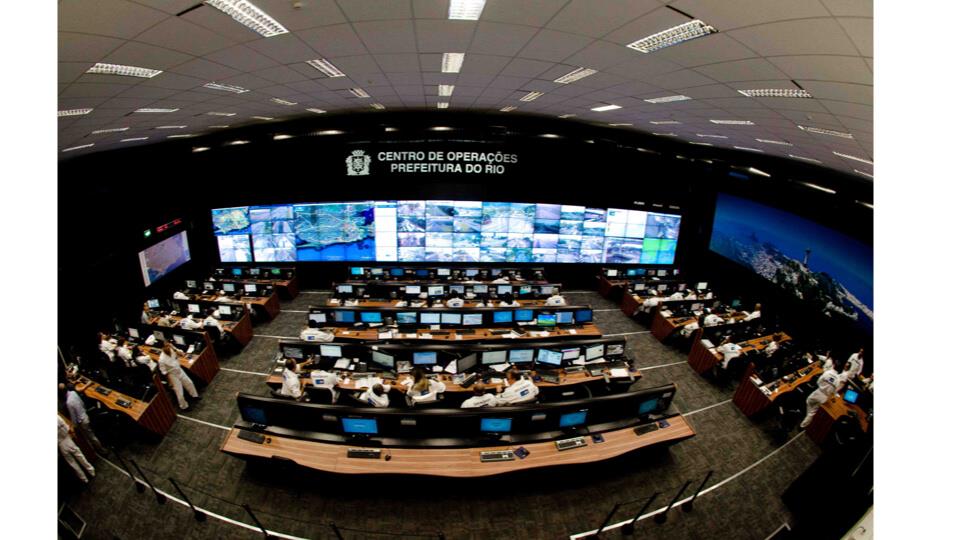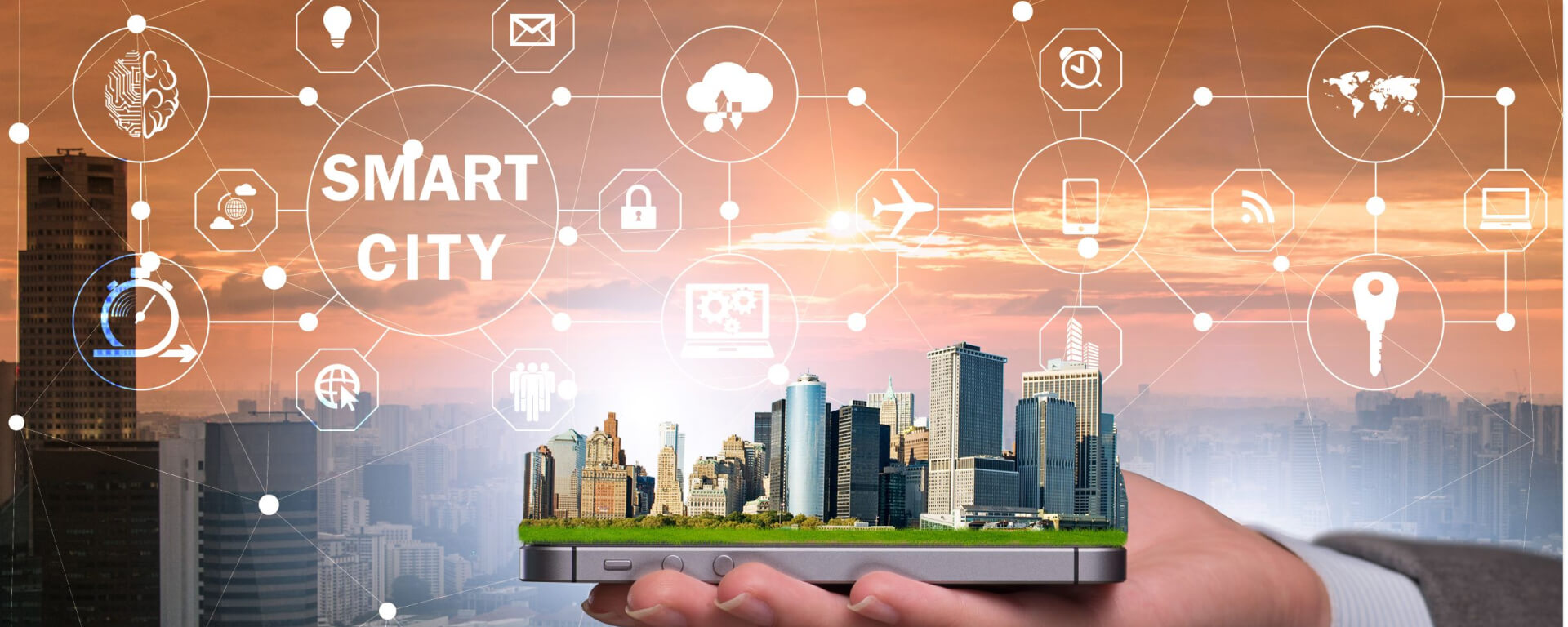Smart City Infrastructure - Building Climate Resilient Sustainable Smart Cities
What can we do to achieve climate resilient infrastructure and sustainable urban development?
Climate change has long been associated with extreme weather events and is the biggest threat to the planet, as reported by the World Economic Forum. Unless drastic changes are made to prevent global temperatures from rising more than 1.5 degrees Celsius, it is likely that we will continue to witness such events with increased magnitude and frequency. These events will continue to interact with complex systems, and eventually set off their own ripple effects in a manner akin to toppling dominoes (U.S. Global Change Research Program, 2018).
Global Warming – A Worldwide Catastrophe
Humanity is facing the challenges of global warming acutely. We may face a future without coastal cities, island nations, coral reefs, unprecedented hurricanes, wildfires, melting glaciers, food security, mass migrations, social conflicts, and many other incidents with links to climate change. The business-as-usual mindset that the world continues to operate on may result in a 4 degrees Celsius rise in temperatures by the end of the century; it’ll be a stark contrast with the 2015 United Nations Climate Change Conference’s (COP21) aim of holding global temperature rise below 2 degrees Celsius.
Cities contribute to more greenhouse gases (GHGs) globally than industries, consuming more than 78 percent of the world’s energy and accounting for over 70 percent of global fossil fuel CO2 (Seto et al., 2014). Similarly, cities are vulnerable to the impact of climate change (Revi et al., 2014). From 2015 to 2018, the world witnessed the hottest consecutive years on record. Cities in the developing world are particularly susceptible; for example, Karachi experiences heat waves in the summer months while other cities are prone to urban flooding during the torrential rains.
When it comes to the world’s response to global warming, many cities are taking the lead in adopting climate risk-specific measures. We take a closer look at the available measures, actions needed for climate resilience, and how the smart cities approach can be adopted. While the term ‘smart cities’ is often used in relation to the larger scheme of things, this article will focus on smart city applications associated with smart planning and operations.
Climate Change and Resiliency – Renewing Old Infrastructure Design
Municipal utility infrastructure management is a global key issue. In most cities, basic foundational infrastructure facilities for utilities such as water, hygiene and electricity were built in the past century. Today, many global cities are announcing substantial overhaul packages to explore integrated distribution modernization projects to improve its resilience. This provides municipals with better oversight in monitoring potable water quality, chemical leakages, and pollution levels in ports and beaches.
Cities are also able to detect early warning signs of flood, oil spill, and promote water quality to citizens and tourists. In the case of mega compact cities, subsidence is a common phenomenon where cities are sinking due to their concrete weight and drawdown effects. Smart city tools can help to prevent this, through the detection and collection of key data, so that the city authorities can make informed decisions.
Mitigating Flood Risks
The effects of climate change are already taking shape, in frequent calamities such as typhoons, heat waves, flooding, etc. Over the course of 20 years, climate-related disasters have accounted for 91% of all events, with floods topping the list at 43% (Wallemacq, 2018). Flood monitoring is crucial, especially for cities that are surrounded by water bodies, or are subjected to torrential rains.
In the past, master planning process does very little in taking flood risk factors into consideration, due to the lack of data within the region concerned. But with climate change, the rate of flooding has increased exponentially. Cities along the Mississippi River are facing increasingly less predictable high-water events over the years (Cusick, 2019). Today, flood risk analysis software (refer to Illustration below) can carry out flood simulations over affected areas, and display the projected propagation of floodwaters in either one or two dimensional mediums.

Many cities are adopting the IoT-based water monitoring systems that not only broadcast risk alerts, but also help to control and record its behaviours in maintaining a satisfactory water flow. Such early flood detection and warning systems are reliable and have stable structures in terms of communications and accuracy. They also provide the authorities with regular data to run various analytic programmes and project the forecasts. However, if flooding within an area is inevitable, a number of solutions are carried out to mitigate the flood. Engineering approaches such as bulkheads, floodwalls and sandbags will need to be deployed.
However, based on analysis along the Gulf Coast from Texas to Florida, research found that $57.4 of the $134 billion could have been prevented, through building green infrastructures - such as wetlands, oyster-reefs and barrier islands. These have proven to be more effective compared to manmade infrastructures (Jacobsen, 2019).
Cities 4.0 – Scaling New Heights in Master Planning
It is important to perform flood and traffic modelling during the initial stages of master planning; a simulation of the above is necessary for future provision and incident management. This can help a city accommodate critical infrastructure such as railway routes (elevated or at grade), hospitals, telecommunication stations, Operations Control Centre (OCC), and sensors, etc. As the city is being built, live feedback from the sensors will train the flood and traffic models into the digital twin of the OCC before deployment into the physical environment. Through continuously training and building on top of the infrastructure and population growth, it can build a more accurate and intelligent model.
Intelligent and Resilient Integrated Traffic and Flood Operations
Before a smart city goes operational, the OCC’s operational processes must be identified, that is, how the information is received, and how the OCC makes a decision and broadcasts the information to the public. Through the use of technology, it can optimize manpower, yet improve the security and safety of the city. The Intelligent Transport System (ITS) department, in Illustration 2, that resides within the main OCC is typically manned 24/7 to monitor the city’s prevailing traffic conditions. Real-time alerts and a comprehensive incident management plan must be established, and a team of data scientists is deployed to predict the next occurrence and the severity of such hits.


Figure 3, which shows a complete OCC for a city, gathers data from the critical sensors placed across the city. By leveraging big data analysis, the OCC monitors the assets and activities, and predicts the next anomaly, thus ensuring a safe and secure environment for the people and infrastructure.

Above shows an OCC in Rio De Janeiro developed by IBM to control the city's daily operations, integrating several departments involved in Rio's routine; and to manage crisis and emergency situations. Rio de Janeiro was constantly hit by Atlantic storms which affected mostly low-income settlements that are located on the high slopes surrounding the metropolis and are prone to devastating landslides. After the last storm in 2010, the city decided to create a centre that operates 24/7 to monitor and control the city. Since the operations of the OCC, one clear benefit is that traffic emergency time response has been reduced significantly with citizens alerted about traffic congestion and accidents and redirected the drivers to the best routes.
Building Smart and Sustainable Traffic Solutions
It is a known fact that developed cities use more energy than developing cities, and hence emit more greenhouse gas (GHG). To this effect, we can adopt the following smart city solutions that can significantly lower their consumption of energy and in turn lower their GHG contributions.
When it comes to cities, there is a heavier concentration of traffic. Smart city solutions related to traffic management can drastically help cities lower their GHG emissions. These include smart parking applications, traffic light integration, traffic information dissemination and so on that enable cities to lower their burden on the environment.
- Street lighting optimization through adding controls to street lighting systems. This optimization gives cities the opportunity to save energy and maintenance expenditure.
- Sensor-based solutions and other technologies can also be embedded with smart street lighting networks to offer a multitude of new city services, including gunshot detection, air quality monitoring, EV charging, traffic management and smart parking.
- Ride-sharing apps such as Uber and Lyft facilitate transport for citizens who don’t own vehicles.
Pollution monitoring and other indices of environmental quality are, more often than not, the talk of town. Air quality index (AQI) can be measured and transmitted to the relevant authorities and citizens in real-time, so that the appropriate measures can be taken. Similarly, IoT, drones, sensors and Blockchain are being used to measure water quality and noise pollution in many cities.
Zero-emission technology – via electrifying mass transit systems and the advent of electrical vehicles – is yet another option for cities to cut their GHG emissions, as is the construction of smart buildings.
Summary: Transition to Climate Change Adaptation
There have been numerous efforts to raise awareness about climate change over the years. However, there is still a worrying number of people who are oblivious to it. No one can escape from the inevitable, as more countries are affected by the natural disasters linked to climate change. In more developed cities such as Florida, home buyers and investors are now taking sea level rise and other climate-induced risks into account. Based on a study in 2016, a 1.8m sea level rise would affect areas currently home to six million Americans; nearly US$1 trillion of coastal residential real estate is also at risk (Ghosh, 2019).
In Asia, there is a huge need for better infrastructure. Long-term insurance funds could play an important role in financing this, but only with the support of regulators and policymakers. Philippines has attracted insurers to invest in infrastructure projects to help pay for upgrades to the country’s power grid transportation links, water resources and other crucial development areas. The Asian Development Bank (ADB) estimates that countries in Asia and the Pacific will need to invest more than US$1.5 trillion a year in total through to 2030 to maintain growth momentum. That estimate rises to more than US$1.7 trillion a year when climate change mitigation and adaptation costs are included. Public funds are not enough when most governments in the region struggle to collect enough taxes. Multilateral development banks such as ADB can provide the basic funds for building infrastructure, but each country also has the responsibility to secure domestic capital. Insurers’ capacity to invest in long-term assets can help to narrow these infrastructure investment gaps and drive economic growth. These investments exhibit better recovery rates than corporate debt and provide relatively stable long-term cash flow (Ferguson, 2019).
The first step in solving any problem is recognising there is one. Climate change – the ultimate tragedy of the commons – is inevitable (McLachlan, 2019). Now, a new question arises: are cities ready to fight back against the vulnerabilities of the climate change? And if yes, can the smart cities approach be one of the solutions? Being a practitioner in this domain, Surbana Jurong is currently developing a smarter OCC analytics and visualisation platform where the integrated flood and traffic model is able to first receive the city’s background information, in order to train the model and improve its input from real-time sensors. The big data collected will then be analysed by the OCC’s predictive engine and visualised to the city operator via an interactive dashboard. Certain information will be automated to be broadcast to public transport operators or the public during an emergency; this allows evacuation from the possible dangers of floods to be more efficient.
Moving forward into the future with climate change as an increasingly uncertain variable, more must be done to stay vigilant. For cities to be more climate resilient, there must be a paradigm shift in the way cities are planned and designed. In doing so, we hope to shape the lives of the people for the better.
The article is co-created by Surbana Jurong (SJ) Academy. Read more SJ Technical articles here
Contributors:
- Muhammad Shoaib, Head of Urban Planning (Pakistan), Surbana Jurong Pte Ltd
Dr Lee Jian Xing, Principal Consultant, Smart City Solutions, Surbana Jurong Pte Ltd
Dr Sim Siang Tze Victor, Head of Resiliency, Surbana Jurong Pte Ltd
References:
- Cusick, D. (2019, March 25). Along the Mighty Mississippi, Cities Swap Sandbags for Marshes. Retrieved from https://www.scientificamerican.com/article/along-the-mighty-mississippi-cities-swap-sandbags-for-marshes/
- Ghosh, N. (2019, June 01). Florida properties: That sinking feeling when climate change means waterfront homes sell for less. Retrieved from https://www.straitstimes.com/world/united-states/florida-propterties-that-sinking-feeling
- Jacobsen, R. (2019, April 01). Rebuilt Wetlands Can Protect Shorelines Better Than Walls. Retrieved from https://www.scientificamerican.com/article/rebuilt-wetlands-can-protect-shorelines-better-than-walls/
- McLachlan, R. (2019, June 04). Climate Change Is a Fourfold Tragedy. Retrieved from https://blogs.scientificamerican.com/observations/climate-change-is-a-fourfold-tragedy/
- Ferguson, N. (2019, May 24). Building bridges. Retrieved from https://insuranceasianews.com/building-bridges/
- Revi, A., D.E. Satterthwaite, F. Aragón-Durand, J. Corfee-Morlot, R.B.R. Kiunsi, M. Pelling, D.C. Roberts, and W. Solecki, 2014: Urban areas. In: Climate Change 2014: Impacts, Adaptation, and Vulnerability. Part A: Global and Sectoral Aspects. Contribution of Working Group II to the Fifth Assessment Report of the Intergovernmental Panel on Climate Change [Field, C.B., V.R. Barros, D.J. Dokken, K.J. Mach, M.D. Mastrandrea, T.E. Bilir, M. Chatterjee, K.L. Ebi, Y.O. Estrada, R.C. Genova, B. Girma, E.S. Kissel, A.N. Levy, S. MacCracken, P.R. Mastrandrea, and L.L. White (eds.)]. Cambridge University Press, Cambridge, United Kingdom and New York, NY, USA, pp. 535-612.
- Seto, K. C., Dhakal, S., Bigiol, A., Blanco, H., Delgado, G. C., Dewar, D., et al. (2014). “Human settlements, infrastructure and spatial planning,” in Climate Change 2014: Mitigation of Climate Change. Contribution of Working Group III to the Fifth Assessment Report of the Intergovernmental Panel on Climate Change. eds O. Edenhofer, R. Pichs-Madruga, Y. Sokona, E. Farahani, S. Kadner, K. Seyboth (Cambridge, UK; New York, NY: Cambridge University Press), 923–1000.
- Wallemacq, Pascaline and House, Rowena (2018). “Economic Losses, Poverty and Disasters 1998-2017” United Nations Office for Disaster Risk Reduction. Retrieved from: https://www.unisdr.org/we/inform/publications/61119

